Water, water and water. That was what we spent most of the seconds of the minutes of the hours of this part of the hike thinking about.
We set out with a swimming pool worth of water: 15 litres – all we could physically carry. We thought we had it all worked out and some extra water to get us to the first semi-reliable water source 7 miles before the Snow Bowl ski resort or, at a push, to the “guaranteed” water of Snow Bowl restaurant. But hiking through largely forested areas meant that that the desert-hot days and complete lack of shade caught us unawares, boiled our brains and metaphorically burnt our fingers.
On the first day, in an effort to conserve water, I took smaller sips than I needed and went to bed thirsty and fixated on cold Topo Chicos – a delicious Mexican sparkling water. We camped on ranch land, about 8 miles south of Lockwood Tank, where we should have pumped and sterilised cattle water, but we were expecting to find more further along the trail and needed to hike light to make the distance within 4 days, so we didn’t run out of food. It was like camping in an inside out bullring, where the cows came to stand around and stare at us as we feasted on whole wheat bread, olive oil, salami, gorgonzola, fig jam, tomato and spring onion sandwiches. Not too shabby!
The next morning, I woke up to find that our ploy of hanging my hiking poles scarecrow-style from the tree next to our food bag had only served the purpose of giving rats, which hadn’t managed to break into the bag, some tasty Leki logo on rubber on which to vent their frustration. Despite a scrub with antiseptic wipes, I spent the rest of the day with the gnawing worry of what nasty rodent diseases I might be about to contract. Glenn kindly watered and fed me all day, so I didn’t have to touch my water valves or food after holding the poles.
We had two ranches (Tub Ranch and Cedar Ranch) and East Cedar Tank ahead of us and likely to provide water, but the uncertainty worried us.
Less than an hour into the day’s hike, we heard voices calling us. We couldn’t see anyone, even though the voices were close by and I could only make out one word, but it was “water”, so we hiked off the trail to find the voice owners. Two Navajo ranch workers whose first language definitely wasn’t English, clearing land of bushes with a pick-up truck and a rope welcomed us, said that when they heard voices they thought it must be their radio, as it was too remote for hikers, gave us two bottles of water to drink, looked amused at how fast we knocked them back, and then produced two bananas, an apple and an orange (items few white Americans would carry in their trucks). We chatted for a while, us admiring the strange Navajo hand gestures, and one of them proudly told me he knew just one word in Spanish. After 3 unsuccessful attempts at catching it, I tried to make him feel better by telling him it must be a Mexican Spanish word I didn’t know. Hopefully he fell for it.
The scenery by now was turning from green, tree-punctuated ranch land into a bleached grass desertscape with Humphreys, Arizona’s highest mountain at 12,637 ft (3,852 m), floating in petrol fume-like heat waves like a mirage on the horizon; a beautiful, barren oven. We were drinking heavily – water, that is -, while an oversized, horned green caterpillar, a black widow spider and a tarantula played chicken on the dirt ranch track we were following.
Despite braving two unwelcoming signs and 12 assorted, mostly friendly dogs amongst many decades of collected belongings piled to man height everywhere we looked, no one was to be found at promisingly-named Tub Ranch.
Cedar Ranch proved no more fruitful. It turned out to be over a mile off the trail and there was no sign of human life… although we did briefly debate whether to bareback ride the suspicious but beautiful horses off into a waterfall-decorated sunset. A 1-mile detour revealed East Cedar Tank to be dust dry despite reports of water. With no flow meters (too heavy), we weren’t sure how much water we had left in our reservoirs, but we did know it was less than we needed. By now, we’d both cut right back on our drinking and, as we hiked each extra step, worry and dehydration poured lead into our shoes.
As usual, we hiked until sunset; the last 3 miles uphill. We hadn’t seen anyone for 12 miles and we were desperately thirsty. Nature’s given us a present every time we’ve felt really low on this hike and that evening was no exception: As we set up camp and looked back from the hill we’d climbed, we saw the sun bathing a surreal eroded volcano, glowing golden and alone on an African-looking plain, crimson.
That night, like the last, tiredness and the romantic notion of sleeping under the stars, made putting the tent up without the fly sheet seem mistakenly attractive. We both spent seemingly every minute of the night dreaming about water; of ordering large bottles of cold Perrier from room service, drinking from cool streams, waterfalls in foreign lands and an even stranger dream involving water theft from a monastery. The full moon added surrealism to the night. When we woke up after each dream to find we were still thirsty, we were disoriented by the bright light shining in our eyes, as if God had forgotten to turn off the light.
As it turns out, when you wake up in the morning after not drinking enough water, your body somehow sorts things out, so you wake up less thirsty. The relief was short-lived, though, and as we hiked on the next morning with just 3 litres of water between us instead of the 5 we needed plus some to refill our bodies’ tanks from yesterday’s mileage, and which we’d have to eek out for 14 hot miles, our saliva began to thicken, swallowing became awkward and our legs turned from Alfa Romeos to Ford Kas and started to run out of fuel.
We were truly in the middle of nowhere – at least 20 miles from a paved road – and the sun was already blazing by 8 AM, but we did hold out some hope that the two cattle tanks 5-6 miles away, reported to sometimes contain water, might save us from a brain-warping day. Much to our surprise, less than a mile from where we’d camped, we came across a VW camper van with a guitar on the driver’s seat and a Toyota 4×4, parked on a dirt track, but our “good mornings” brought no signs of life or water and we couldn’t be sure if the answering silence was the result of a hippy hangover or of the lack of people.
Four miles, a tarantula and a detour later, we found Bonita Tank to be ugly and dry. Half a mile later, we passed a hunters truck with a cool box, tantalisingly locked in on the passenger’s seat. We called “good morning” again, but no one answered. Another half mile later, a mistake on the topographic map tricked me into a fruitless, mile-long detour to look for Badger Tank, finding only a large collection of mountain lion scat, while Glenn stayed by the dirt track in case a hunter drove by. We switched out and Glenn scouted another nearby track, where Badger Tank emerged as a very muddy frog, tadpole and fly-ridden pond with WATER! Never has filthy water been more welcome! I took the pump and sterilisation equipment over to the puddle and started batting the flies away, while Glenn resumed his road guard position. I drank half of the first litre of the sterilised gunge I pumped and it seemed to taste of orange blossom and sweet almonds. Delicious! I’d just finished sterilising the third litre when Glenn ran the quarter mile over to tell me that the VW guitar-playing hippies, who were in fact, young elk hunters, had materialised and could fill our reservoirs with fresh water. They gawped as I drank half a litre of their water in one gulp, gave us 7 more litres of water and even a cold beer of some brand we would never have bought, but which tasted like heaven.
Now we had a water surplus and it took us a while to get over the anxiety and celebrate. We drank and drank, and worked out how much water we needed at least 5 times, worried we’d get it wrong, before finally accepting it was OK to pour 2 litres of puddle water away so as not to weigh our packs down unnecessarily.
Another mile down the road, we found cached water, probably for other hikers, and another mile later 3 hunter 4x4s roared out of nowhere. Now there was water everywhere.
That day, we walked our personal best daily distance of 17.1 miles with a 2000 ft (650 m) elevation gain, and camped just below the map’s 9000 ft (3000 m) elevation contour line, having been saved 3 miles earlier from pumping just-in-case extra water from a spring by Brandon, the “lion” and bear hunter, who not only gave us cold water, a Coors Light and Gatoraide, but offered to drive out and fetch us food if we needed it (we didn’t); exceptionally kind.
That night, we didn’t dream of water, but of the espresso and cooked 2nd breakfast we’d get at the Snow Bowl ski resort restaurant, and of the shower and sink clothes washing we were looking forward to at the lodge. We packed up extra early the next morning and hit the trail to cover off the last 5 miles to get there at record speed, our enthusiasm dampened slightly by a painful twinge in Glenn’s left shin as he walked. As we emerged onto the tarmac Snow Bowl parking lot after the inevitable photo at the “Utah 190 miles” sign, our tongues were hanging out so far in anticipation that we were almost licking the first asphalt we’d seen for 4 days. Terry, the Snow Bowl security guard, must have thought we looked rough, because he pulled up to ask us where we were headed. When we told him, he broke the news that the lodge and restaurant just a few metres away were closed and must not be the ones we’d phoned from Tusayan to check they were open. When he saw our exaggerated disappointment, he took pity on us and offered us a ride to another lodge 6 miles below the ski resort, which we took no time at all to accept.
The lodge was a very basic motel, with a questionably clean room, but we were ecstatically happy to be there. As it turned out, the restaurant’s hand-tossed pizzas were not to be missed, though we were pleased that the waitress had cautioned us to only order one at a time, as they were enormous and our eyes much larger than our stomachs.
The next day, we hiked through the woods and back to the trail, breathless from the elevation, but pleased to be on the final stretch to Flagstaff. Glenn’s leg wasn’t so happy, though, and started to stab him with every step, in revenge for 3 weeks of walking and heavy backpack-carrying.
On the way to Flagstaff, we met two ladies who are hiking the Arizona Trail in sections, mountain cyclist Flint, who we later met again in Flagstaff and, much to our surprise, we ran into Mitzy, who along with her family had given us water from their camp at Grand View Tower a week earlier. Mitzy was out mountain biking another section of the Arizona Trail, this time with two friends.
We reached Flagstaff around 16.00h, our senses confused by all the tarmac, cars, houses and people, and with Glenn limping badly with clear symptoms of shin splints. Flagstaff was the promised land, though, and we were very excited to emerge into its bustle.
We’ve walked over 200 miles. Only 650 to go…

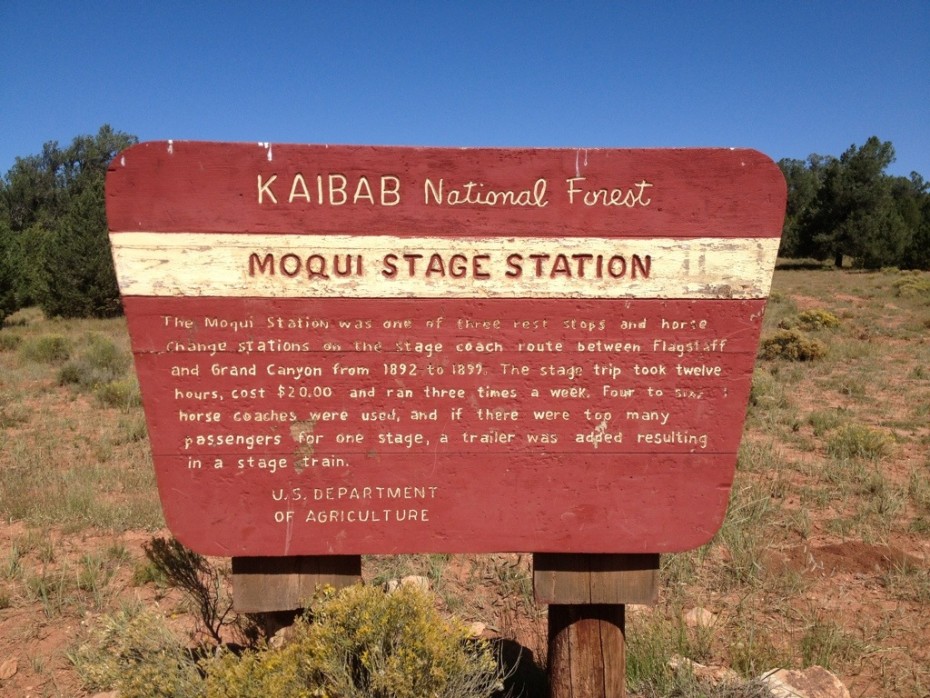
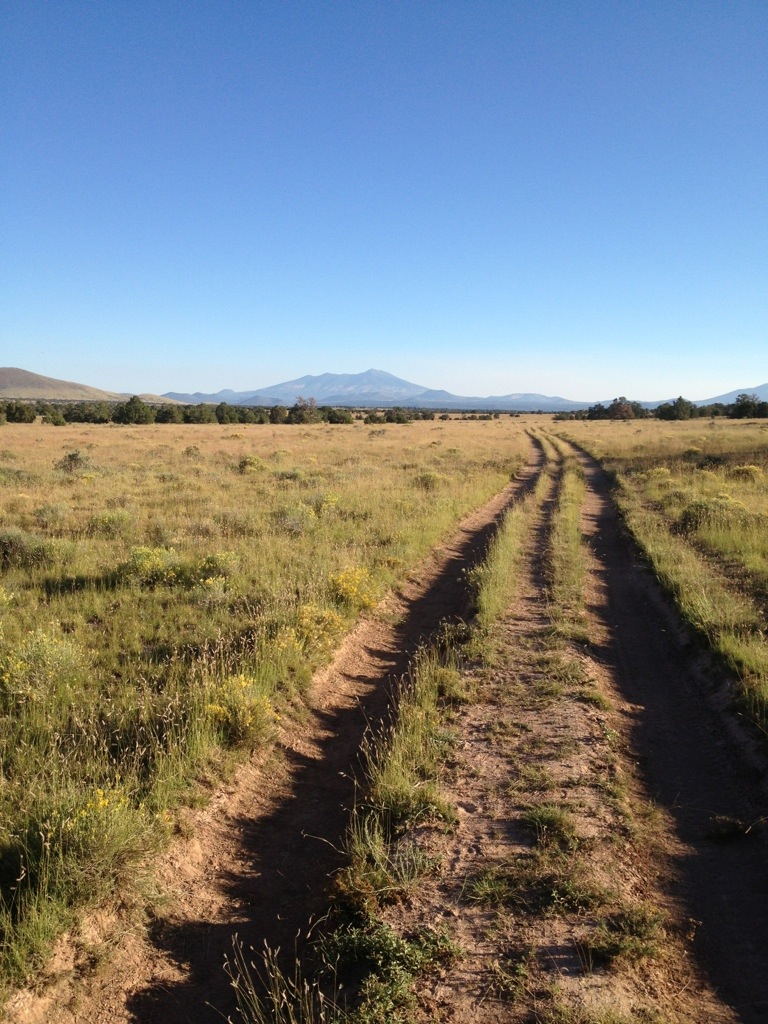
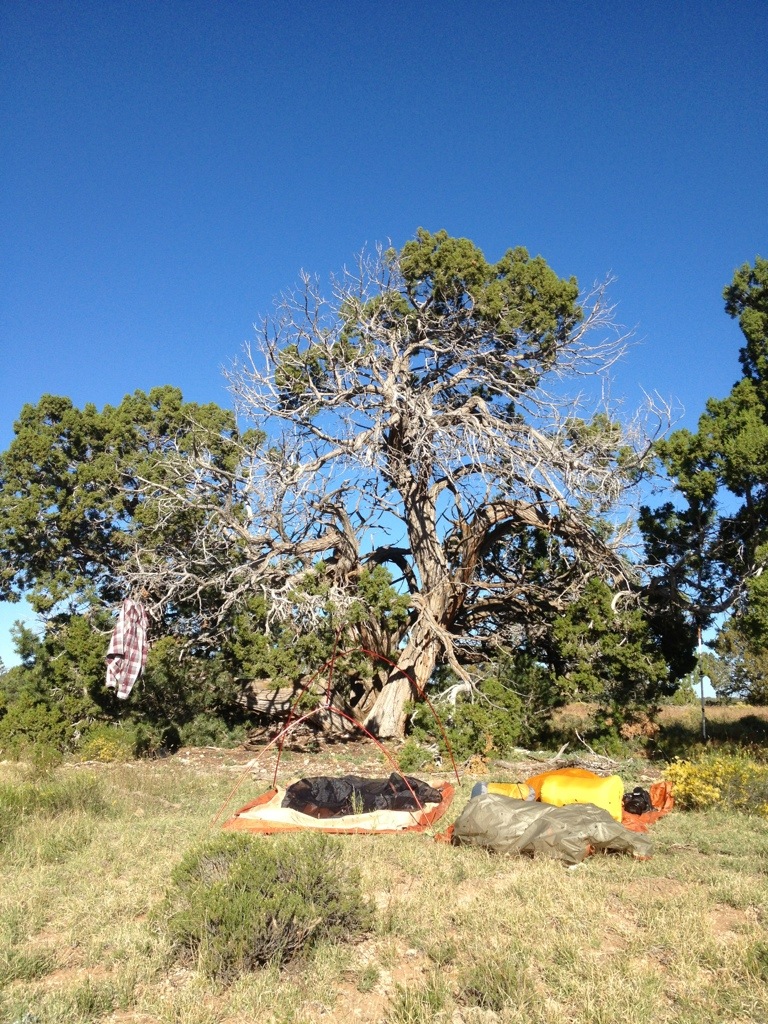
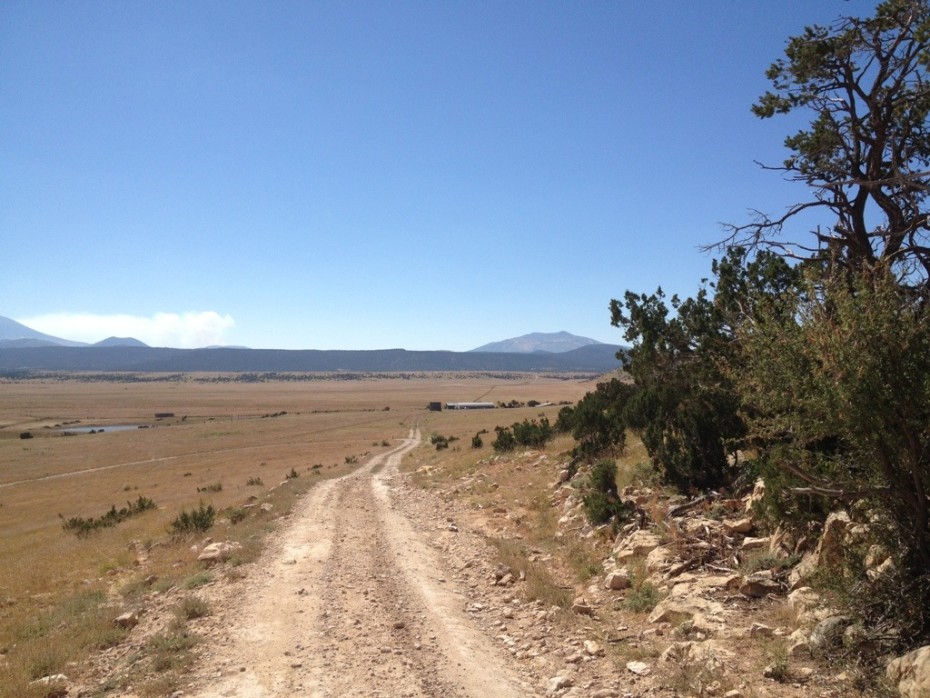
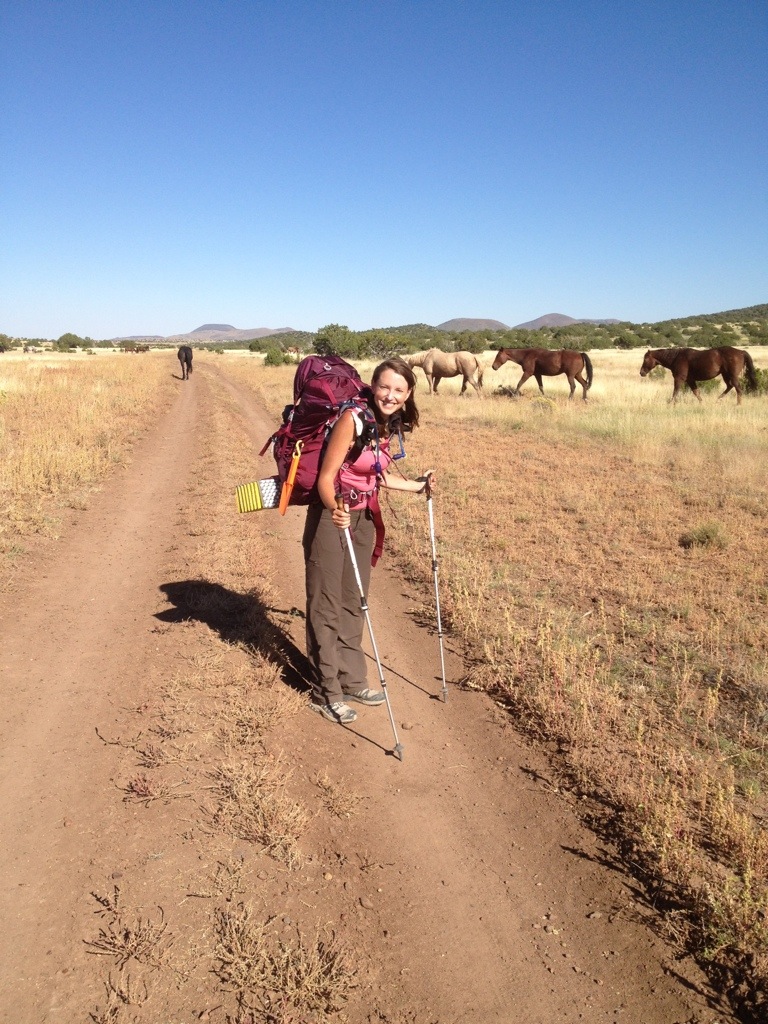
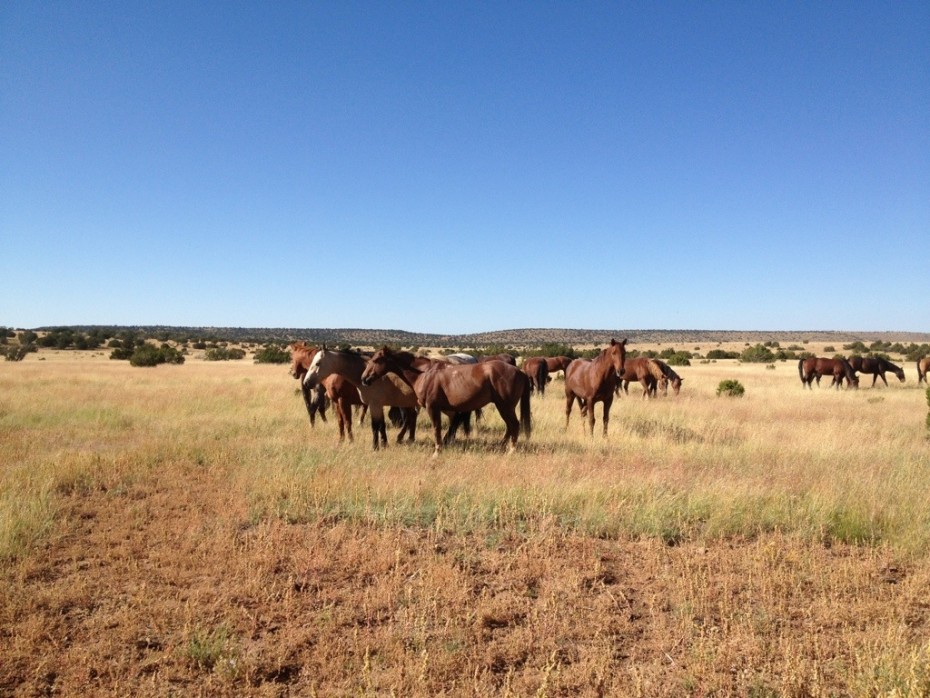
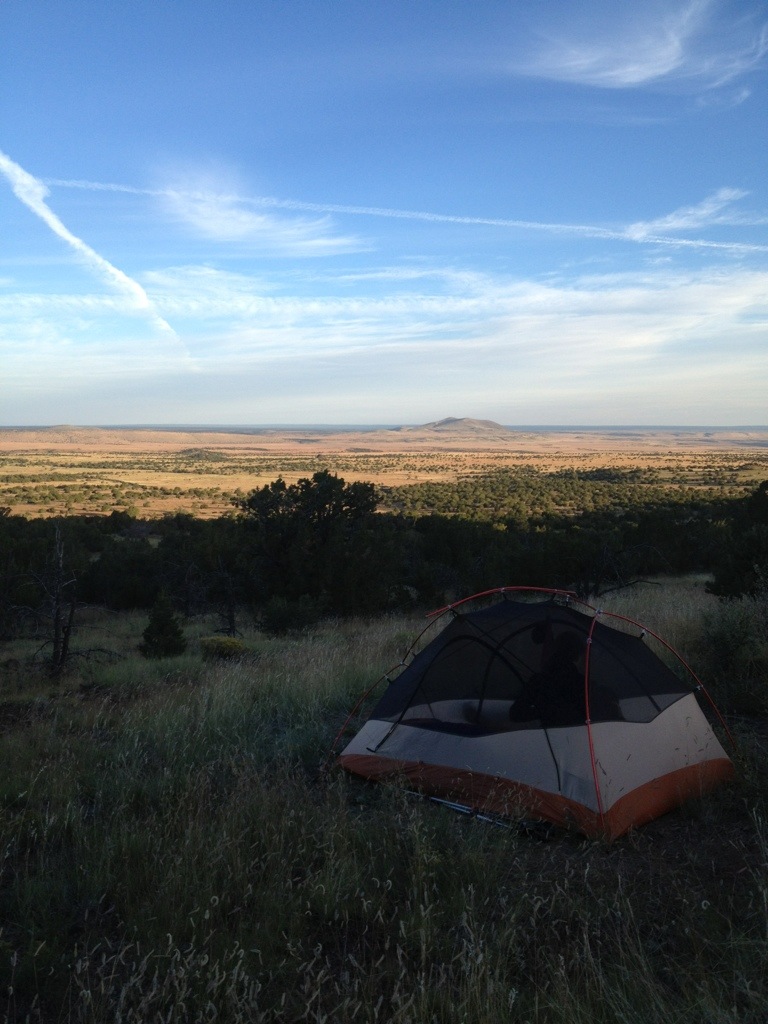
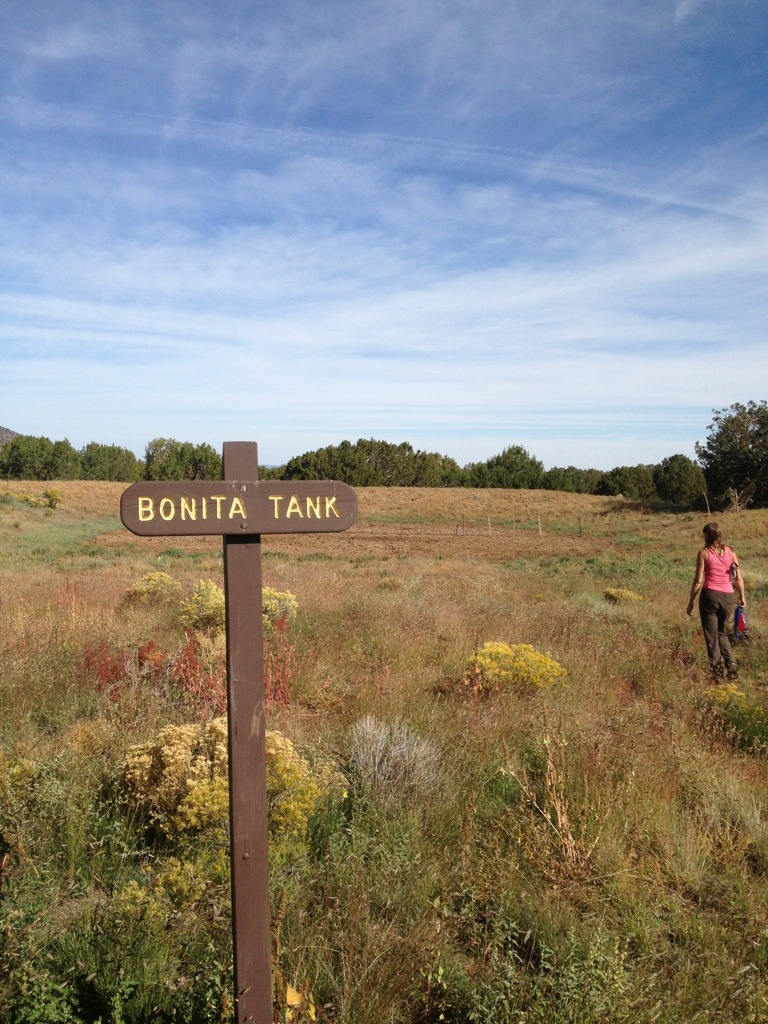
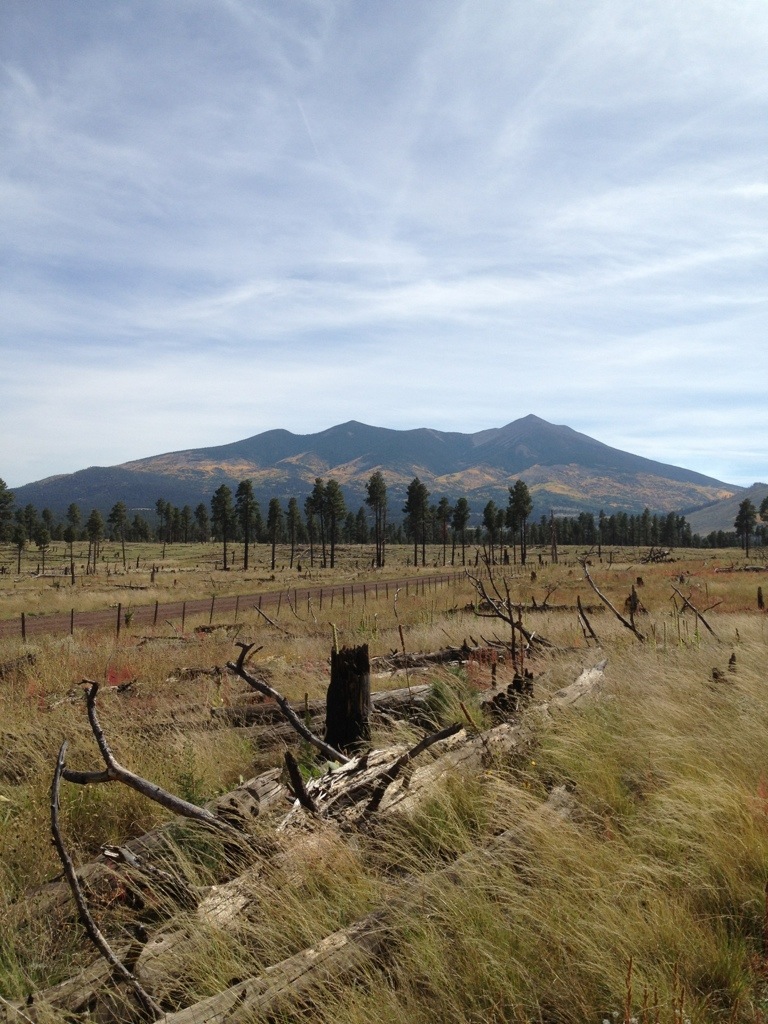
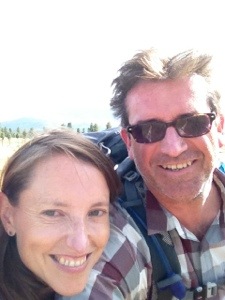
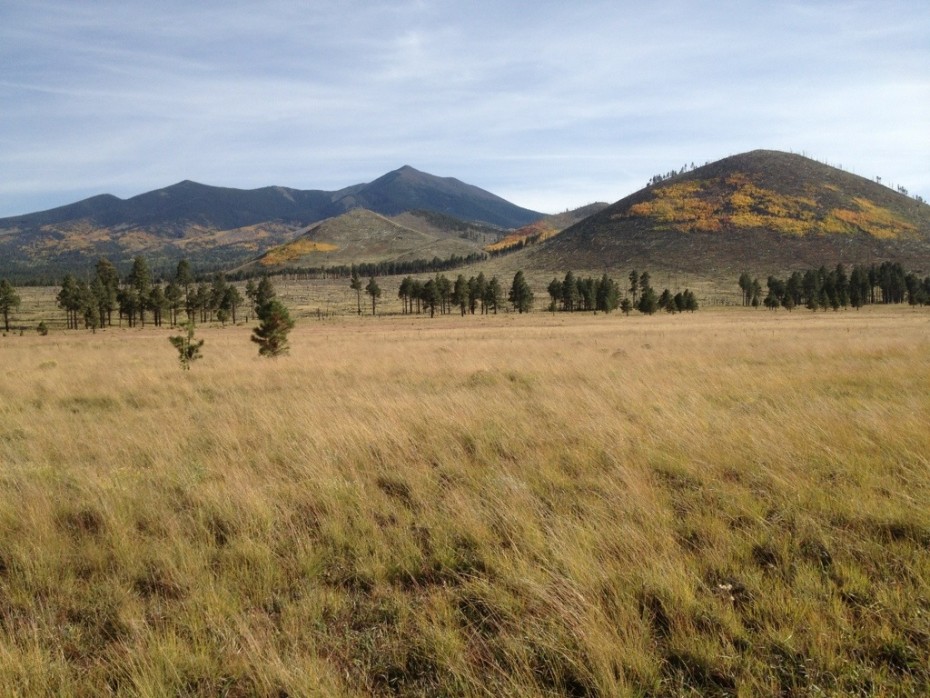
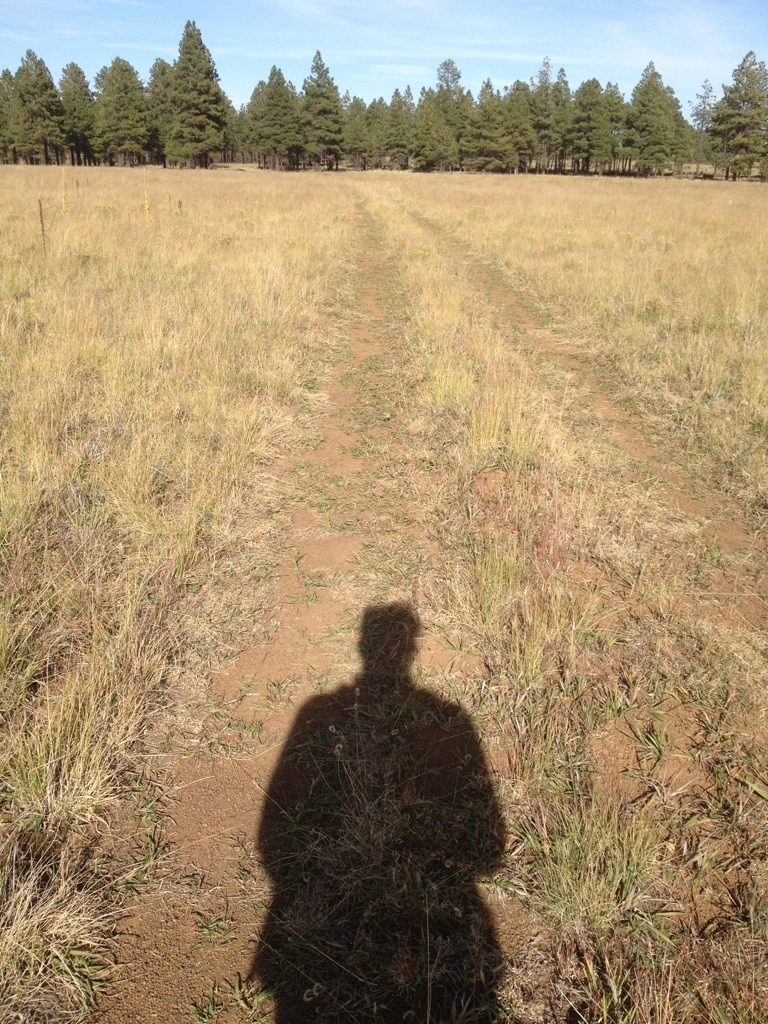
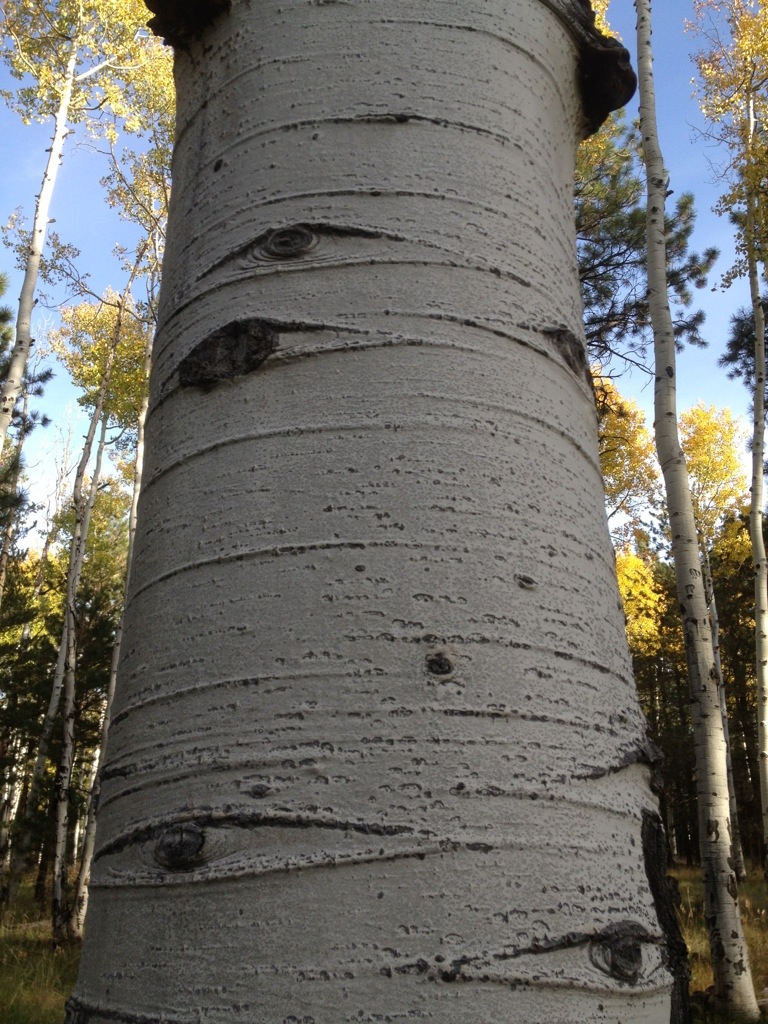
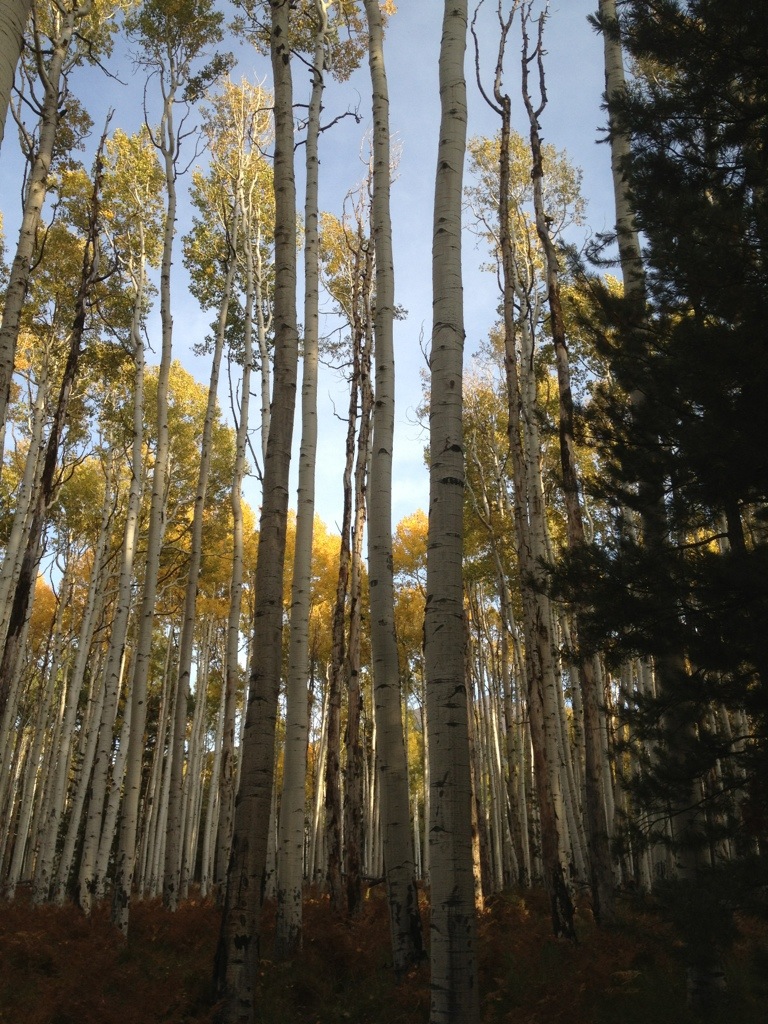
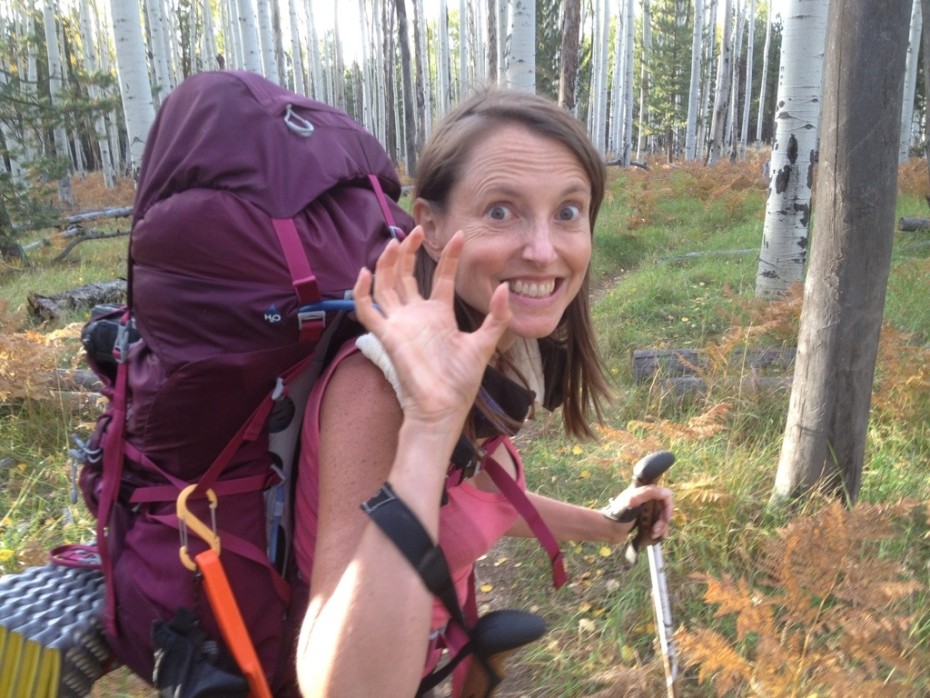
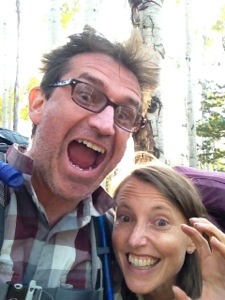
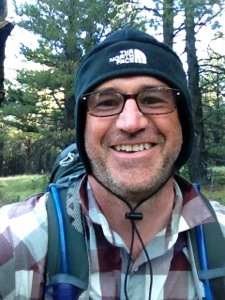
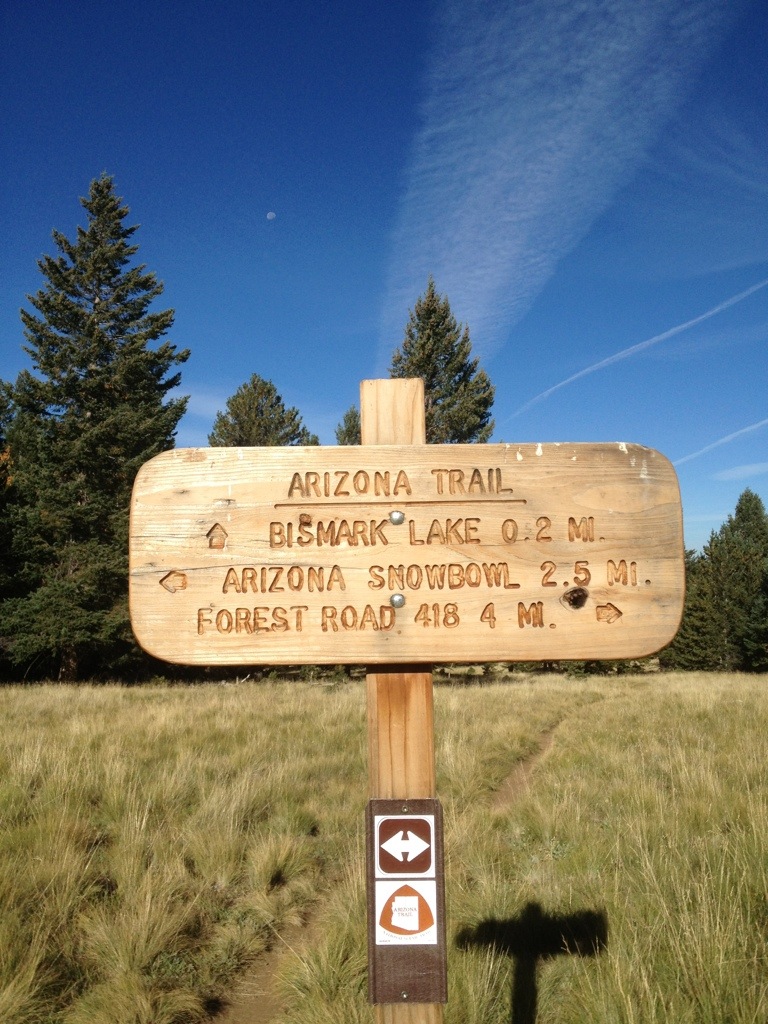
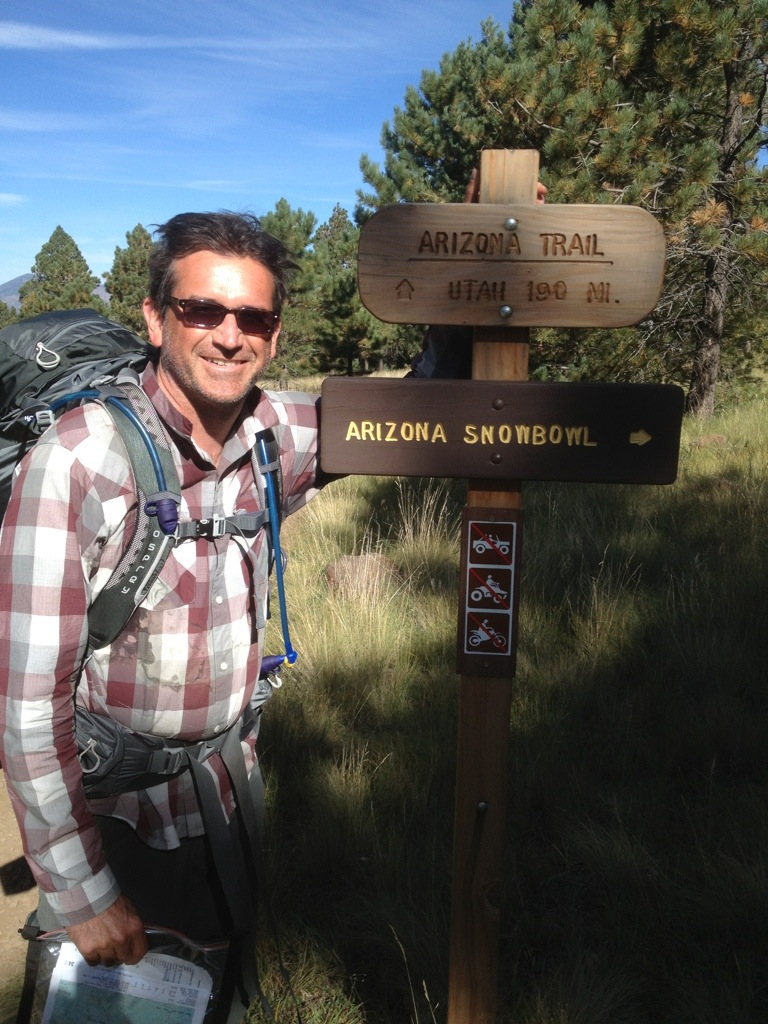
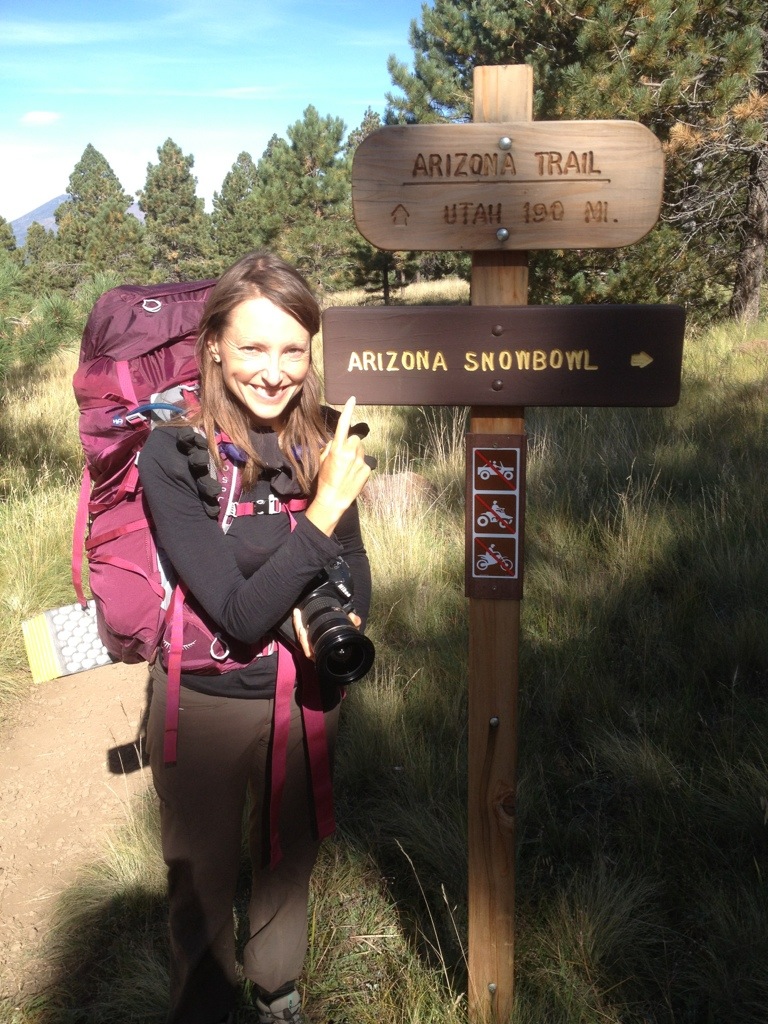
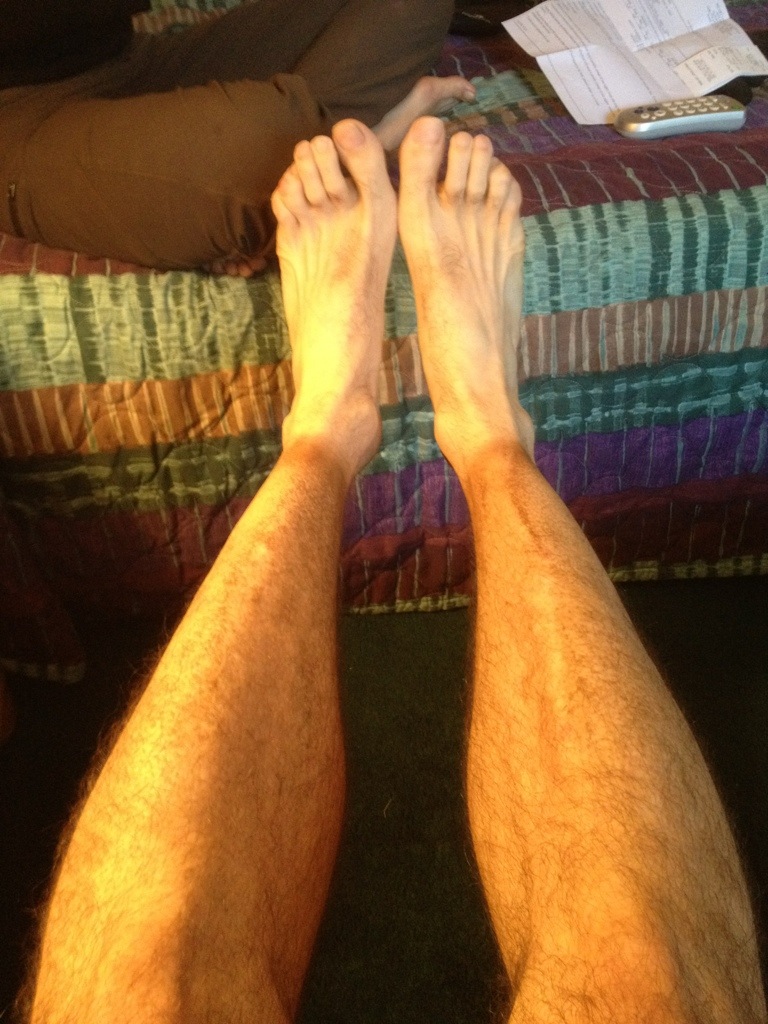
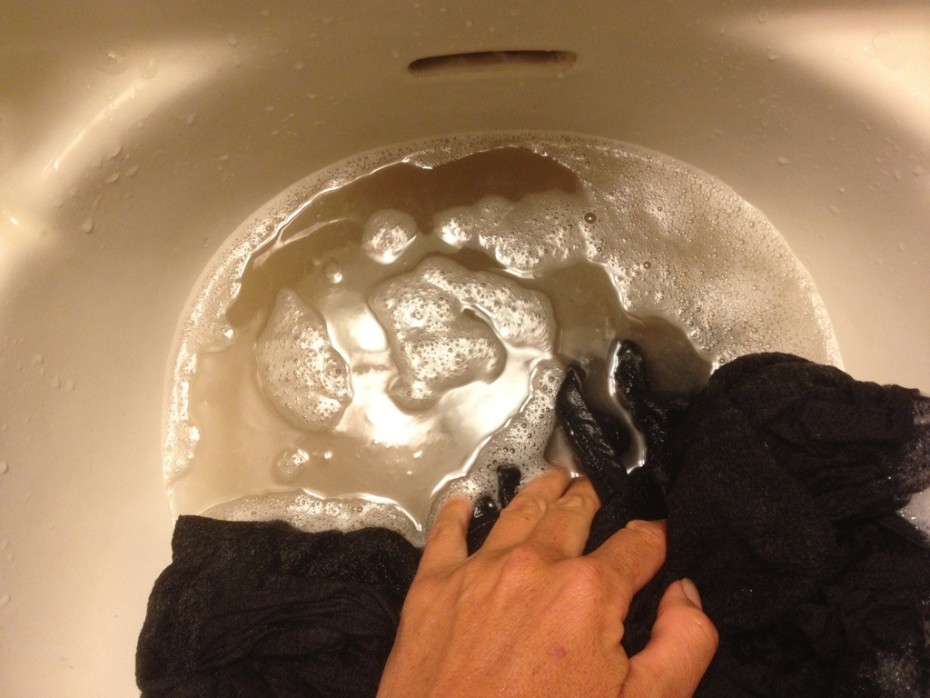
What a story, what an adventure!! Blessings to both of you on your journey and we still hope to see you down the trail–Enjoy Flagstaff and hoping Glenn’s shin splints have some time to recover before you head out again. So good to hear about your latest adventures and thinking of you every day. Can’t wait to hear what happens next!! Happy trails until we see you again, Dupree Ruth & Drivin’ Dave
Wonderful to hear from you both!
I know it sounds crazy, but once or twice on the trail, we’ve felt like you’ve been tuning in remotely to check we were doing OK, so thank you for thinking of us!
We’ve decided to take a week off hiking to try and let Glenn’s shin recover, so we’ve hired a car and we’re exploring Sedona and hopefully soon some of the Native American sites between here and Cañón de Chelly. It’s very strange to be driving around with the countryside whizzing by so fast, and in clean clothes!
We’ll be back on the trail about 4 days from now, Glenn’s leg allowing and hope we can see you further South, if it fits with your schedule.
Best wishes from Sedona
Françoise and Glenn
wow what an adventure! and amazing that you can do such a thing in 21st century USA just shows how vast the place really is compared to the UK (lands end to john o’groats is only 603 miles!) keep safe and remember this is not only an adventure but you should be having fun Rod & Lis
Great to hear from you!
The US really is vast and, while I’m not a fan of the functional architecture you find in a lot of towns (with exceptions, for sure), the natural parks and wildernesses are spectacular and second to none. x Françoise